Key takeaways:
- Misinformation can distort perceptions; it’s crucial to critically evaluate sources and context before sharing news articles.
- Recognizing different types of misinformation—such as satire, misleading headlines, and fabricated news—helps foster a cautious approach to consuming news.
- Identifying reliable news sources involves checking their reputation, transparency, and commitment to journalistic ethics.
- Using fact-checking tools effectively and sharing their findings promotes a culture of informed discussion and helps combat misinformation.

Understanding misinformation in news
Misinformation in the news can often feel overwhelming, doesn’t it? I remember a time when I stumbled upon a sensational headline that made my heart race. It turned out to be misleading, highlighting how crucial it is for us to dissect what we read more critically.
Understanding misinformation requires us to look beyond the surface. It’s easy to share an article that resonates emotionally, especially if it aligns with our beliefs. But have you considered how your perspective might cloud your judgment? I’ve caught myself sharing articles that felt personally impactful, only to later find substantial inaccuracies upon deeper investigation.
It’s important to remember that not all news sources are created equal. I often reflect on the emotional weight of the stories I consume; some provoke outrage or fear, while others inspire hope. I’ve found that checking the source of these articles and seeking out fact-checking organizations can significantly enhance my understanding of the news landscape, ensuring I stay informed without falling into the trap of misinformation.
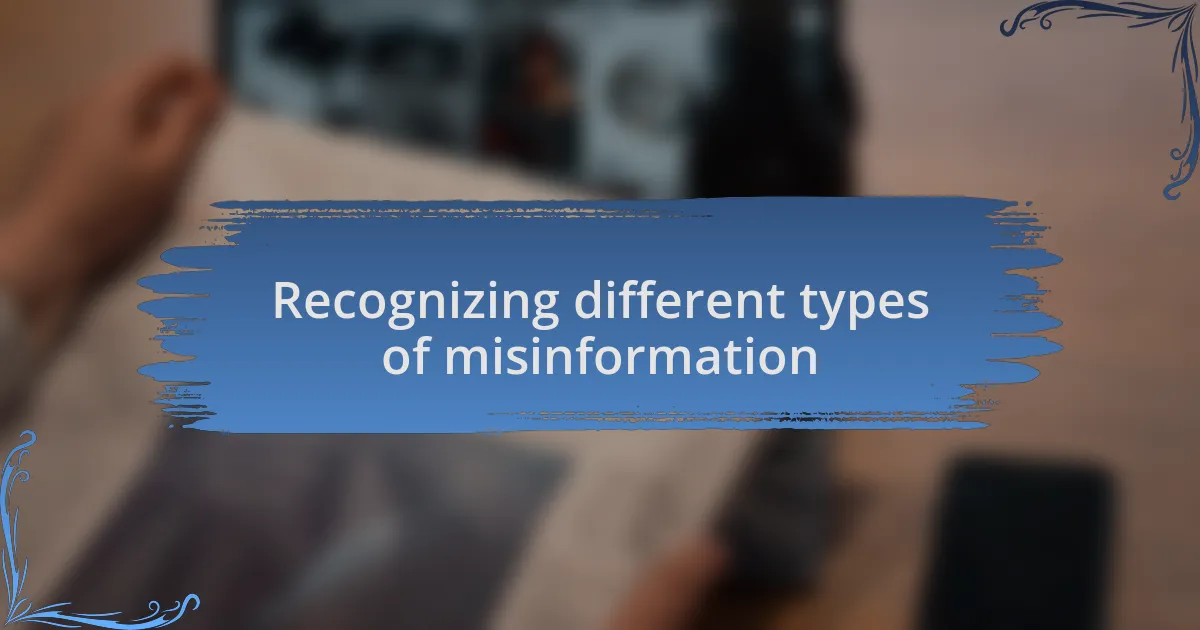
Recognizing different types of misinformation
When it comes to recognizing different types of misinformation, it’s essential to grasp that not all misinformation serves the same purpose. There are satire and parody pieces that are meant to entertain, often leading readers astray if they don’t recognize the intent behind them. I remember sharing a satirical article once, thinking it was serious, only to realize it had been crafted for laughs—such moments can be embarrassing but also enlightening.
Then, there are misleading headlines that can distort the truth without actually being false. For example, once I saw a headline claiming a well-known figure “advocated” for a controversial policy, but when I read the article, it was clear the context was misrepresented. Have you ever been drawn in by such a headline, only to find the actual content didn’t match your expectations? These experiences remind me that context is key in determining the accuracy of information.
Lastly, we can encounter completely fabricated news, which is intentionally deceptive and often spreads rapidly through social media. I’ll never forget the time a friend shared an outrageous article claiming an event that never occurred. It led me to question how many people might have believed it without even checking the facts. Recognizing these types—satire, misleading headlines, and outright falsehoods—helps develop a more cautious approach to news consumption; awareness is our best defense against misinformation.
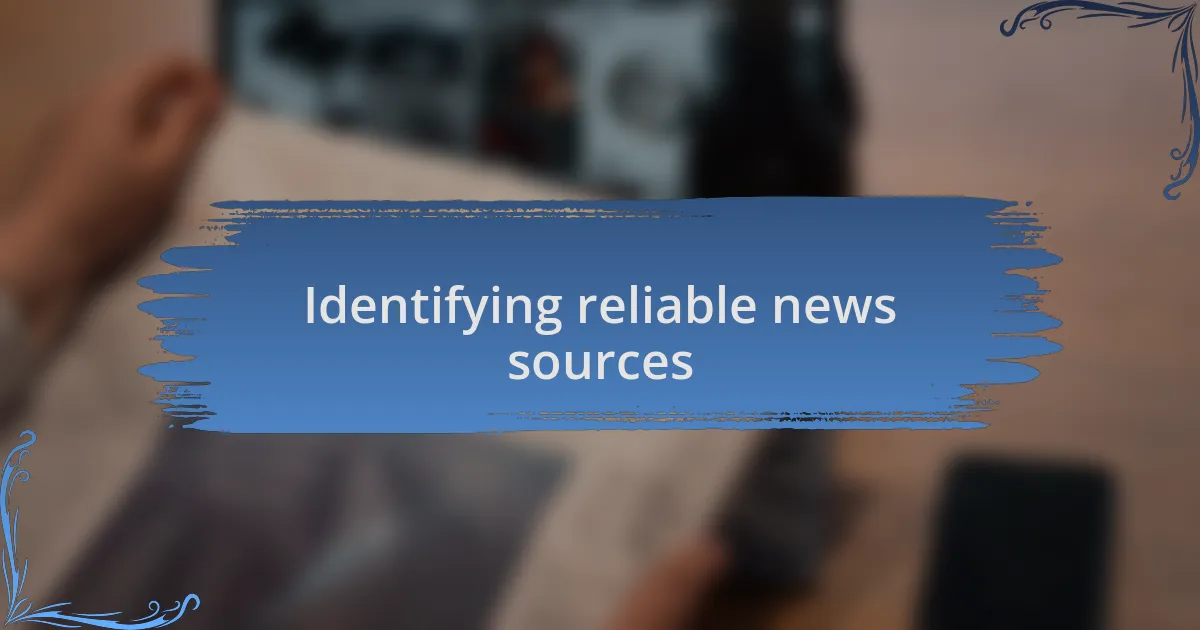
Identifying reliable news sources
Identifying reliable news sources involves looking for media outlets with a strong reputation for accuracy and integrity. I recall an instance where I was drawn to a new news site because of a trending story, only to discover it lacked credible sources and provided more opinion than fact. It’s a helpful reminder to check a publication’s track record and understand what they stand for.
Statistics show that trusted news organizations often engage in rigorous fact-checking processes and employ professional journalists. When I see a piece from a site I recognize for its commitment to journalistic ethics, it eases my mind as I delve into the information presented. Have you ever felt that sense of trust or relief when clicking on an article from a source you know to be reliable? That comfort can save you from a lot of misinformation.
Another key factor is transparency—does the source cite its information clearly? I was once surprised by a critical article that claimed significant financial misconduct but provided no links to evidence. This experience taught me that if a news source is unwilling to show its work, I need to proceed with caution. Reading between the lines can often reveal whether we’re dealing with a credible source or a story distorted by lack of accountability.
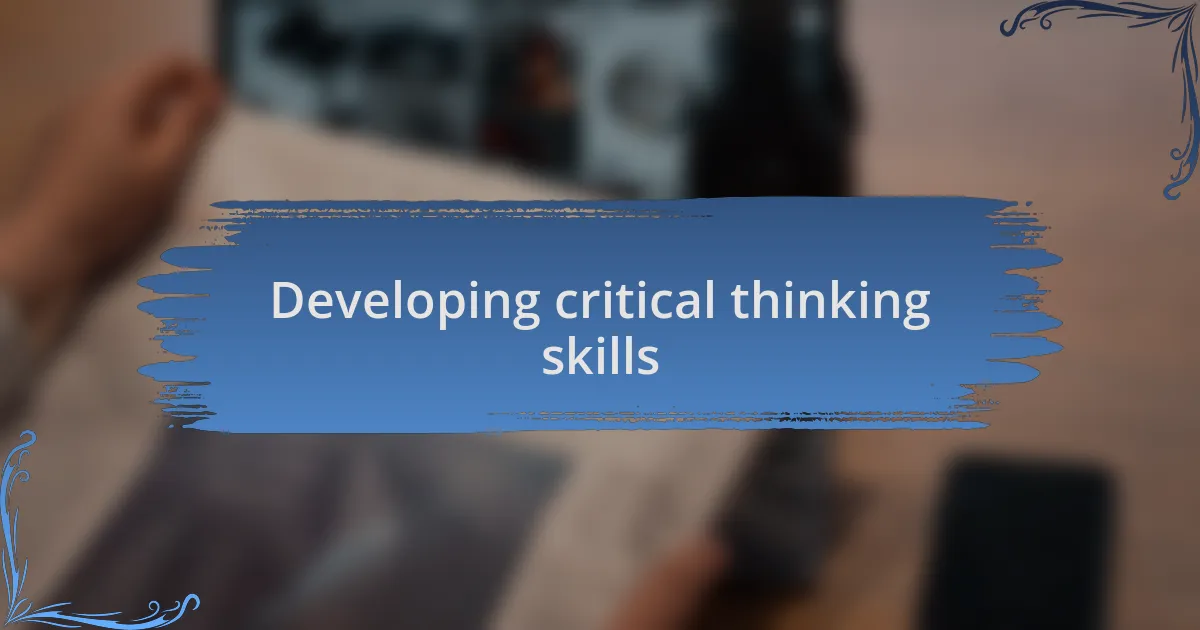
Developing critical thinking skills
Developing critical thinking skills is essential to navigating today’s complex news landscape. I often find myself evaluating not just what is being said, but how it’s being presented. For example, when I read an article that sounds overly sensational, my instinct is to take a step back and question the motives behind such a tone. Have you noticed how easily headlines can exaggerate to grab attention? This kind of scrutiny helps distinguish between genuine reporting and emotional manipulation.
One strategy I employ is the “Three Questions” approach: Who wrote it? What evidence is presented? Why does it matter? I remember reading a story about a public figure that sparked outrage, but a quick look into the author’s background revealed a history of biased articles. This prompted me to dig deeper, and I ultimately uncovered facts that weren’t included in the story. It’s experiences like these that reinforce the idea that not all news is created equal, and a critical eye is vital.
Engaging with different perspectives also enhances critical thinking. Recently, I started participating in discussions with friends who have varying viewpoints. One conversation about a controversial news event opened my eyes to angles I hadn’t considered before. It made me realize that true understanding requires a willingness to explore beyond my comfort zone. Have you ever had your perspective shifted just by discussing a news topic? That exchange is not just informative; it’s an exercise in critical thought that cultivates a more nuanced understanding.
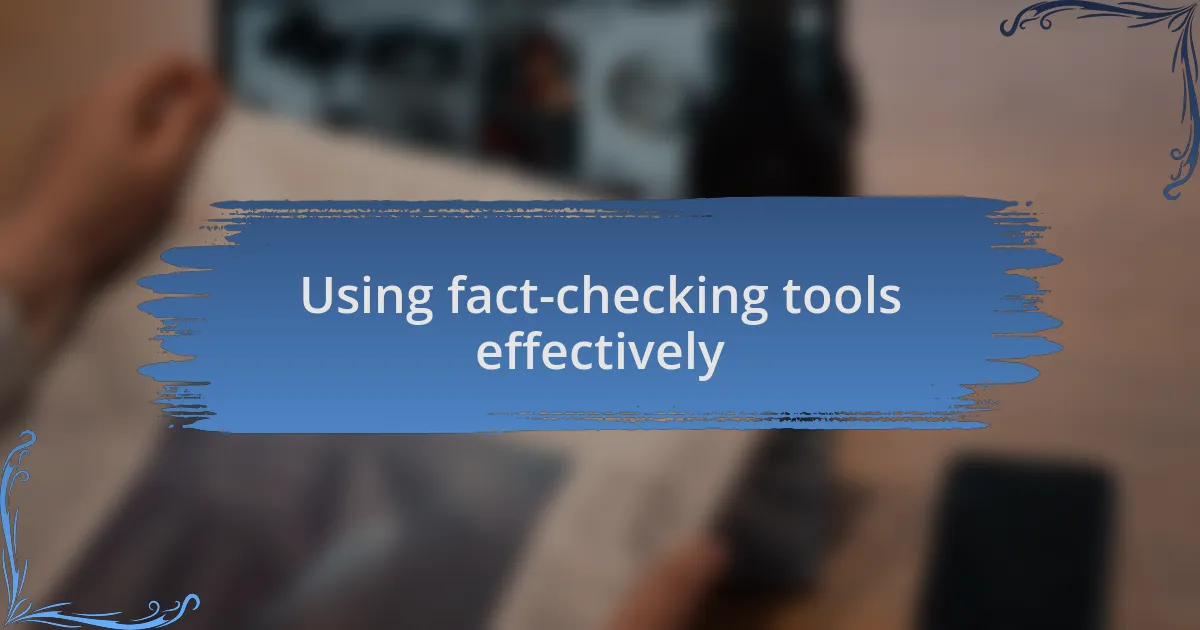
Using fact-checking tools effectively
Using fact-checking tools effectively begins with knowing where to look. I often turn to established sites like Snopes or FactCheck.org when I come across dubious claims in articles. The last time I used Snopes, I was stunned by the sheer volume of misinformation circulating about a popular event. It turned out that a widely shared story was based on a misunderstanding, reinforcing how crucial these tools are.
However, it’s not just about visiting these websites; it’s also about understanding how to interpret their findings. I remember feeling relieved after verifying a viral social media post about a contentious issue. The fact-check revealed that key facts were twisted to fit a narrative. This experience taught me that fact-checking tools don’t just highlight lies; they offer clarity in a sometimes murky sea of information. Have you ever experienced a moment where fact-checking turned your confusion into confidence?
Lastly, I believe it’s essential to share fact-checking results with others. After confirming a false statement about a local policy, I made it a point to inform my friends and family. They appreciated the clarity and, in turn, began questioning their own sources more critically. This ripple effect is not just empowering; it fosters a community of informed individuals who are better equipped to navigate the news landscape together.
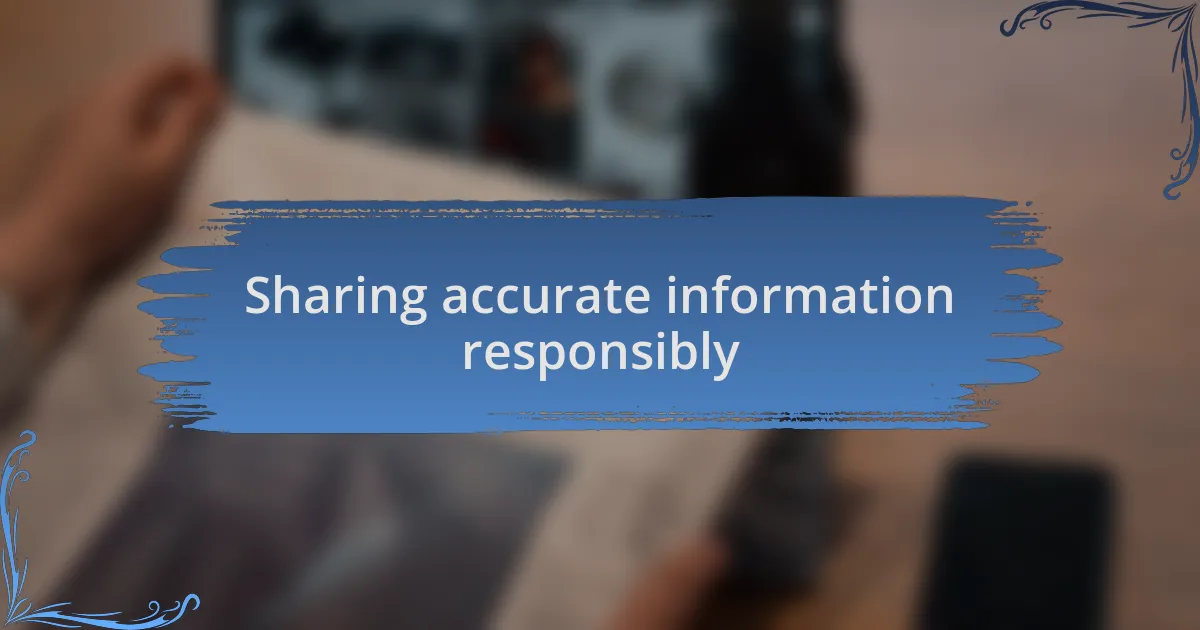
Sharing accurate information responsibly
When it comes to sharing accurate information, I always remind myself that context matters. I recall a time when I shared an article about a new health guideline, but I didn’t scrutinize the source. One of my friends pointed out that the article was published by a questionable site. That experience taught me to ask: Is the source reputable? It’s a simple yet vital question to consider before hitting that “share” button.
I also think about the potential impact my words can have on others. After discussing a trending story with my colleagues, I noticed how my cautious approach encouraged them to seek out reliable information. Have you ever felt the responsibility that comes with sharing news? It’s not just about spreading information; it’s about shaping perceptions and, ultimately, actions. I find it satisfying to think that I may have encouraged someone to dig deeper instead of just accepting headlines at face value.
Engaging in thoughtful discussions about news sources and accuracy creates a culture of critical thinking. I remember engaging with an online community where we scrutinized various narratives presented in the media. Sharing my findings felt collaborative; together, we developed a habit of cross-checking facts and questioning sensationalist headlines. What if we all took that collective responsibility seriously? The difference we could make in combatting misinformation would be monumental.
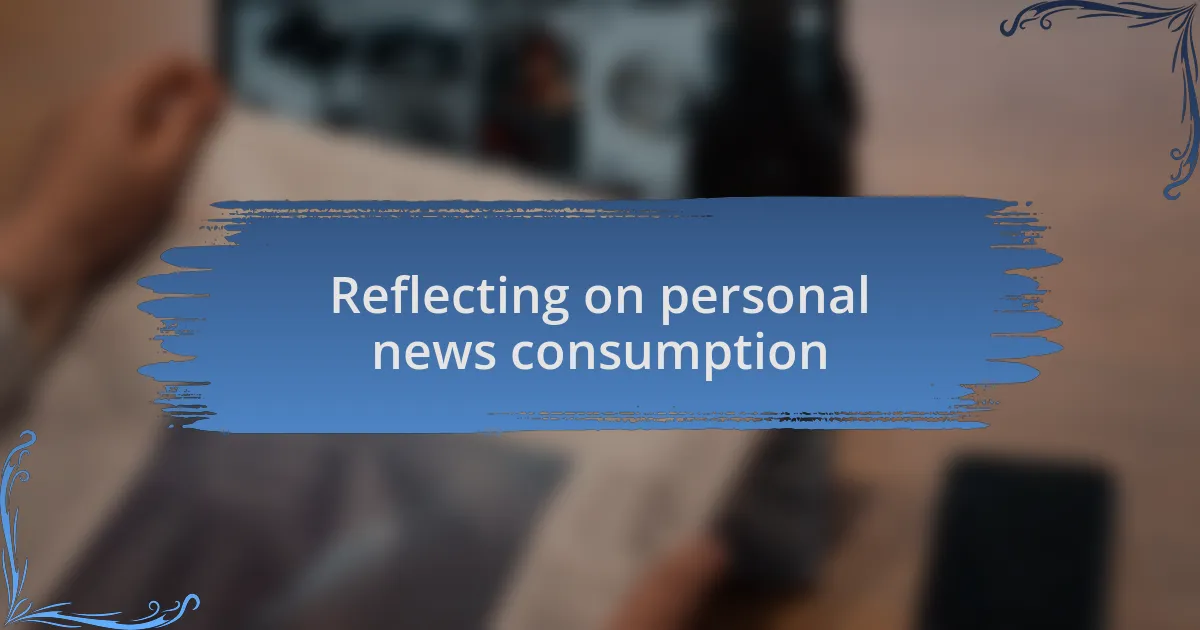
Reflecting on personal news consumption
Reflecting on my own news consumption, I often notice how my habits have evolved over time. I remember a phase when I relied heavily on social media for updates, only to realize that the algorithms prioritized sensational content over accuracy. It was unsettling to think about how easily I fell into that trap. Have you ever felt like you were being fed what you wanted to see rather than the truth? It’s a wake-up call to reassess my sources regularly.
There are moments when I catch myself skimming headlines without delving deeper into the stories. One day, I read a headline about a significant political decision and immediately formed an opinion based purely on that snippet. Later, I took the time to read the full article, discovering nuances that absolutely shifted my perspective. This experience made me understand the importance of resisting the urge to react instantly. How often do we judge a story solely on its title?
I also find value in my discussions with friends about news topics. These conversations often reveal the different angles from which we approach the same story. The other week, a friend and I debated an article on climate change, and I initially felt frustrated with his stance. However, as we shared our viewpoints, I realized we both had valid concerns rooted in our personal experiences. This dialogue not only broadened my understanding but also emphasized how collectively questioning and discussing news can lead us toward a more informed viewpoint.